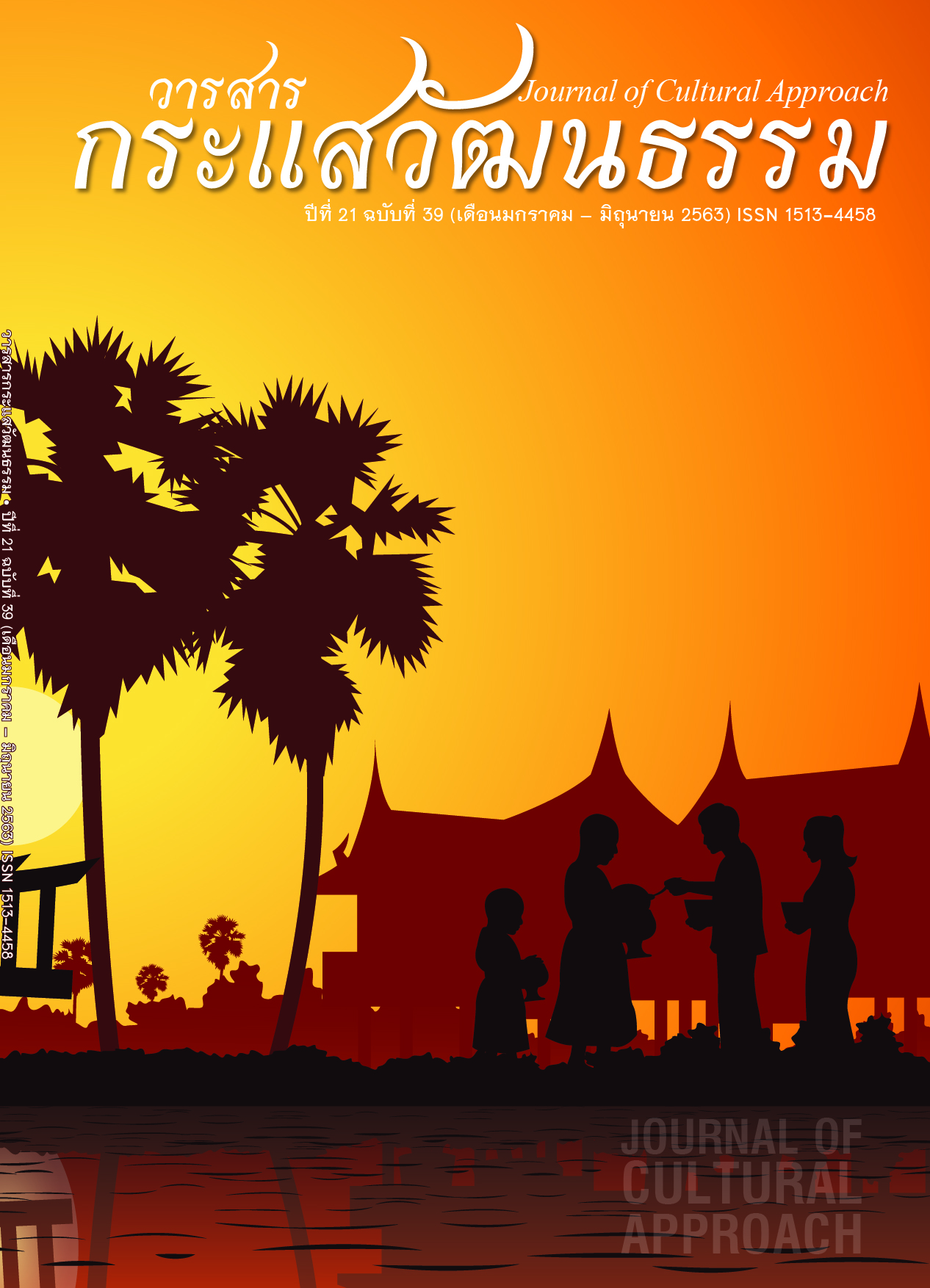Narration of Japanese Culture on Thai Television Documentary
Main Article Content
Abstract
It’s found that the contents reflect their producers’ intentions. If the intent is to present travel opportunities, the focus is on Japanese cultural products (ex: architecture and food), if the intent is to enlighten Thai audiences, the focus is on Japanese cultural ideals (for example, mannerism and ideology). Moreover, producers have a mindset of inferiority, so most content is in a positive aspect.
Sponsors from Japan have a far-reaching influence on a for-profit producer from the production process to contents, but nonprofit producers face more difficulties in production (ex. Filming permits, budget, or interview appointment). Nevertheless, the documentary is not profitable in Thailand so producers are required to have other kinds of content to make ends meet.
Article Details
Proposed Creative Commons Copyright Notices
1. Proposed Policy for Journals That Offer Open Access
Authors who publish with this journal agree to the following terms:
- Authors retain copyright and grant the journal right of first publication with the work simultaneously licensed under a Creative Commons Attribution License that allows others to share the work with an acknowledgement of the work's authorship and initial publication in this journal.
- Authors are able to enter into separate, additional contractual arrangements for the non-exclusive distribution of the journal's published version of the work (e.g., post it to an institutional repository or publish it in a book), with an acknowledgement of its initial publication in this journal.
- Authors are permitted and encouraged to post their work online (e.g., in institutional repositories or on their website) prior to and during the submission process, as it can lead to productive exchanges, as well as earlier and greater citation of published work (See The Effect of Open Access).
Proposed Policy for Journals That Offer Delayed Open Access
Authors who publish with this journal agree to the following terms:
- Authors retain copyright and grant the journal right of first publication, with the work [SPECIFY PERIOD OF TIME] after publication simultaneously licensed under a Creative Commons Attribution License that allows others to share the work with an acknowledgement of the work's authorship and initial publication in this journal.
- Authors are able to enter into separate, additional contractual arrangements for the non-exclusive distribution of the journal's published version of the work (e.g., post it to an institutional repository or publish it in a book), with an acknowledgement of its initial publication in this journal.
- Authors are permitted and encouraged to post their work online (e.g., in institutional repositories or on their website) prior to and during the submission process, as it can lead to productive exchanges, as well as earlier and greater citation of published work (See The Effect of Open Access).
References
Berger, A. A. (1997). Narratives in Popular Culture, Media, and Everyday Life. London: SAGE Publications.
Chalongrat Tippiman. (1996). An Analysis in Narrative Structure on American Movies, Actresses Role. Master’s Thesis. Faculty of Communication Arts, Chulalongkorn University.
Kamchorn Soonpongsri. (2012). Aesthetics, Philosophy, Criticism. Bangkok: Chulalongkorn Press.
Khuntong Inthai. (1984). Japanese or Thai People Who Will? Bangkok: Pittayakarn Press.
McQuail, D. (2008). McQuail’s Mass Communication Theory. 5th ed. SAGE Publications.
O–Wrightchoer, E. (1988). Japan. Bangkok: Wattanapanit Press.
Thai–Japanese Technology Association. (2006). Japanese 360 Degree. Bangkok: Language and Culture Press.
Theerapap Lohitkul. (2001). Not Easy to Produce A Documentary. Bangkok: Praew Press.
United Association for Education. (1987). Japan Today. Bangkok: Uksorn Sampan Press.
Unnop Limpanarom. (2005). Writing, Television Script. Chiang Mai: Chiang Mai University.


